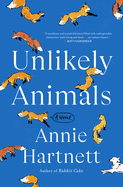
| Publisher: | Ballantine Books | |
| Genre: | Humorous, Family Life, General, Literary, Fiction | |
| ISBN: | 9780593160220 | |
| Pub Date: | April 2022 | |
| Price: | $28 |
| Fiction |
by Annie Hartnett
In Unlikely Animals, the wistfully charming tragicomedy from Annie Hartnett (Rabbit Cake), a chorus of all-seeing ghosts tied to a cemetery in Everton, N.H., relates an offbeat saga of peculiar animals, missing people and family ties, set against the backdrop of the opioid crisis.
Since birth, 22-year-old Emma Starling has possessed the power to heal with her touch. When the med school dropout arrives back in tiny Everton, everyone assumes she's come to heal her father. Professor Clive Starling is dying of a brain disease so mysterious it can be diagnosed only via autopsy, and he now spends his days with the ghost of naturalist Ernest Harold Baynes. Baynes has suggestions for susceptible Clive, like ordering an $18,000 semi-domesticated Russian fox. The ghosts know Baynes is real and initially find Clive's predicament "both funny and sad, the kind of story we like best." They're less amused, however, after they learn Emma can't help Clive "edge the Grim Reaper out by a nose." Her hands have lost the healing touch.
Loosely based on a real town and the obscure historical figure Baynes, Unlikely Animals feels like a fairy tale--if fairy tales encapsulated all the messiness of real life. It perfectly captures the tone and texture of a town where life is inescapably colored by the opioid crisis. Pops of humor abound, especially in Emma's interactions with her students and the occasional moments when the ghosts give one of the animal characters the main point of view. This unapologetically genre-bending tribute to life, death and the beautiful weirdness found in both has potential to spark exceptional book club discussions. --Jaclyn Fulwood, blogger at Infinite Reads
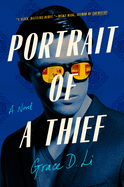
| Publisher: | Tiny Reparations Books | |
| Genre: | Cultural Heritage, Crime, Asian American, Fiction | |
| ISBN: | 9780593184738 | |
| Pub Date: | April 2022 | |
| Price: | $26 |
| Fiction |
by Grace D. Li
In Grace D. Li's suspenseful art-heist thriller, Portrait of a Thief, an art history student convinces others to help him steal priceless artwork and return them to China. Will Chen studied hard, got good grades and made his parents proud when he was accepted into Harvard. He's on track for success until he learns about the Summer Palace, an imperial residence in Beijing. British and French forces burned the palace to the ground in 1860 and looted the treasures within, including 12 ornately sculptured zodiac heads. Seven of them have been returned, but five remain the property of different museums across Europe and the U.S. Will writes an article arguing that the artwork should be returned. Suddenly, a Chinese company offers Will $50 million to steal the zodiac heads and return them to China.
Will enlists his sister, Irene, for help recruiting a team they can trust: Daniel, a medical student; Alex, a computer genius; and Lily, an engineering student with a penchant for fast cars. Like Will, the members of the group are squeaky-clean overachievers, standing on the precipice of their parents' version of success. Breaking into museums, five altogether, will ruin their futures--but only if they get caught. The high-stakes situation leads to mistakes, arguments and attractions that threaten the group before the five can get anywhere near their life-changing payout.
Debut author Grace D. Li makes a strong argument for why parent-pleasing students should and shouldn't derail their lives for money, even the kind that erases debt. But it's the sexual tension of the will-they-or-won't-they subplot melding with the will-they-or-won't-they-get-caught narrative that makes this novel a thriller. --Paul Dinh-McCrillis, freelance reviewer
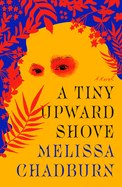
| Publisher: | Farrar, Straus and Giroux | |
| Genre: | Literary, Fiction | |
| ISBN: | 9780374277758 | |
| Pub Date: | April 2022 | |
| Price: | $27 |
| Fiction |
by Melissa Chadburn
Melissa Chadburn's electrifying debut novel, A Tiny Upward Shove, opens with a gruesome death observed by "Aswang," a shape-shifting creature of Filipinx folklore, who knows "about the slow agonies of death" because she reanimates the body of 18-year-old Marina, "murdered on a pig farm in a place called Port Coquitlam," the penultimate victim of a serial killer. Aswang serves as partial narrator to a story that mainly belongs to Marina.
Marina's Lola (grandmother in Tagalog) ensured a happy childhood in Monterey, Calif. Mutya, Marina's Filipina mother, was a teenager when she was briefly married to Marina's Black father and Marina was born. But when another boyfriend convinces Mutya to move to Los Angeles, Marina is separated from Lola's nurturing protection and soon becomes a statistic of neglect and violence, landing at a group home. Marina's bunkmate Alex's childhood couldn't have been more heinous: five months into a perfectly matched adoption, Alex's birthmother reclaimed her, only to enable three years of torture. Marina, one year older than Alex, emancipates earlier from the court system. Her parting promise to find Alex's adoptive mother leads Marina to Vancouver, where no good deed goes unpunished--deception, drugs, slavery, slaughter await--until Aswang can finally wreak overdue revenge.
The violence is graphic and relentless, yet bearing witness seems equally mandatory: this horror is reality, especially for girls and women of color. Chadburn--who experienced foster care herself--grounds her novel in what she's seen, what children and adults have (not) survived. Writing with remarkable grace, even surprising moments of transporting joy, Chadburn creates a miraculous literary platform to claim these missing stories. --Terry Hong, Smithsonian BookDragon
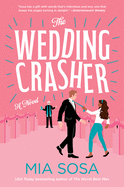
| Publisher: | Avon | |
| Genre: | Women, Romantic Comedy, Romance, Multicultural & Interracial, Own Voices, Fiction | |
| ISBN: | 9780062909893 | |
| Pub Date: | April 2022 | |
| Price: | $15.99 |
| Romance |
by Mia Sosa
Mia Sosa (Acting on Impulse) serves up an extra helping of fake dating in her steamy, laugh-out-loud romance The Wedding Crasher. After Solange overhears the bride confessing her love to someone else, she proceeds to ruin Dean's ceremony. What she doesn't know is that the wedding is a modern-day marriage of convenience.
Having a wife would help Dean's attempt to make partner at his law firm, so now Dean needs Solange's assistance. Because the partners seek someone to woo a potential new lawyer and only couples will do, Solange and Dean engage in their own fake-dating scheme. When Solange's aunt and cousin visit from Brazil, it becomes her turn to need a fake boyfriend. Solange, a continuing education teacher and a diehard romantic, may be leaving D.C. for a position in Ohio; Dean needs stability and doesn't want to risk a messy relationship. Despite all this, their inconvenient feelings are undeniable, turning their fake relationship into something real.
The Wedding Crasher is closely tied to Sosa's The Worst Best Man, but it can stand alone. The large Afro-Brazilian family the author has created is so warm, funny and nosy that readers will want to spend more time with them. Solange and Dean's banter alone is enough to recommend the novel, but Sosa manages to fill the prose with everything romance fans could want: food, family, heat and humor. --Suzanne Krohn, librarian and freelance reviewer
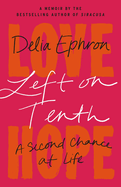
| Publisher: | Little, Brown | |
| Genre: | Biography & Autobiography, Medical (Incl. Patients), Women, Personal Memoirs | |
| ISBN: | 9780316267656 | |
| Pub Date: | April 2022 | |
| Price: | $29 |
| Starred | Biography & Memoir |
by Delia Ephron
Delia Ephron's beautifully measured, eloquent and moving memoir of illness, death and the possibility of finding love later in life is an emotional rollercoaster. Left on Tenth begins in 2015 when Ephron (Siracusa) is 71. After a decade-long battle with prostate cancer, her husband of 32 years, author Jerome Allan Kass, receives hospice care. "He was my true home," she writes. "My first safe place." She is left alone after his death in their 10th Street apartment in New York City's Greenwich Village. Three years earlier, her sister Nora Ephron had died after living with acute myelogenous leukemia (AML) for six years, which Nora had kept a secret. Delia had lived through more than a decade of dealing with two family members' chronic illnesses and death.
A year after her husband's death, she reconnects with a widowed doctor; Nora had set Delia up on a date with him when Delia was only 18. They quickly fall in love. Suddenly, her life is a lot like a rom-com script written by Nora and Delia Ephron. When Delia is diagnosed with AML, she undergoes chemotherapy, but her remission lasts only eight months. A bone marrow transplant with a survival rate of 20% is her only option. Her grueling and horrifying months-long hospitalization leaves her depleted, severely depressed and suicidal. The fact that she does indeed recover is remarkably uplifting and should give hope to others battling diseases.
Ephron's reluctance to portray herself as an ideal patient taps into readers' empathy and adds tremendous power to her brutally candid and moving memoir of her long battle with a very aggressive cancer. --Kevin Howell, independent reviewer and marketing consultant
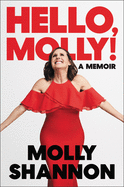
| Publisher: | Ecco | |
| Genre: | Biography & Autobiography, Women, Personal Memoirs, Entertainment & Performing Arts | |
| ISBN: | 9780063056237 | |
| Pub Date: | April 2022 | |
| Price: | $27.99 |
| Biography & Memoir |
by Molly Shannon, Sean Wilsey
Hello, Molly! is a multi-faceted love story, a candid and touching memoir by Molly Shannon (Tilly the Trickster), Emmy-nominated actress and comedian. Shannon was a six-year cast member of Saturday Night Live, her inimitable humor steeped in paying close attention to the people in her life. Her psyche was imprinted at the age of four when a car crash claimed the lives of her mother, her younger sister and a cousin. The tragic accident was caused by her father, who was driving while tired and under the influence.
Shannon, adventurous from an early age, possessed an innately cheerful and positive disposition, which saved her. She drew upon humor to lighten her load--and also help dispel bouts of depression and guilt that plagued her usually colorful, open-minded father. The two served as cheerleaders, confidantes and touchstones for each other. This beautiful father-daughter story is woven throughout the memoir, which includes many funny anecdotes about Shannon's hard work, dedication, resilience and sacrifice on her road to stardom. She employed many laugh-out-loud, creative career strategies en route to SNL. Once there, she honed many memorable, quirky characters, including Catholic school misfit Mary Katherine Gallagher. Shannon's conversationally styled narrative reflects her wholly original brand of comedy.
Shannon expresses sincere gratitude for those who believed in and boosted her career. However, the story of her enduring love for her absent mother and sister--as well as the bond she shared with her bighearted father--casts Shannon in a new light, one that radiates with heartfelt sensitivity. --Kathleen Gerard, blogger at Reading Between the Lines
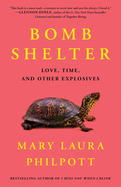
| Publisher: | Atria | |
| Genre: | Biography & Autobiography, Women, Personal Memoirs | |
| ISBN: | 9781982160784 | |
| Pub Date: | April 2022 | |
| Price: | $27 |
| Biography & Memoir |
by Mary Laura Philpott
Mary Laura Philpott (Penguins with People Problems; I Miss You When I Blink) is worried. According to her amusingly fretful essay collection Bomb Shelter: Love, Time, and Other Explosives, she's worried about her children's health, her aging parents' health, her own health, climate change, school shootings, the imminent empty nest, losing her looks, not being taken seriously and the turtle who lives in her Nashville neighborhood. Other than the turtle bit, these are fairly standard anxiety arenas, but Philpott has a leg up in the Handwringers' Olympics even beyond her snappy sentences, disarming self-awareness and winning self-deprecation.
When he was in 10th grade, Philpott's son had an epileptic seizure on the bathroom floor. Philpott greeted this harrowing sight with a "sense of recognition": "Oh. There it is... the worry had finally materialized." Call it an affirmation of a life spent wearing "disaster-colored glasses." Philpott's son's newfound vulnerability is a recurring touch point throughout Bomb Shelter, whose essays explore worry-churning developments, both immediate (Philpott's father's triple bypass) and ongoing (Philpott has a cache--"my secret showcase of gullibility"--of pricey anti-aging skin creams). Throughout her book, whose occasional lapses into mawkishness are soon enough undercut by humor, Philpott makes a persuasive case for the worrywart.
Readers of Bomb Shelter will see, and they may well join Philpott as, felled by worrisome herniated discs, she lies on the floor and stares at the ceiling, working through her anxieties, a supine but proud poster child for nervous Nellies everywhere. --Nell Beram, author and freelance writer
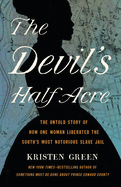
| Publisher: | Seal Press | |
| Genre: | Biography & Autobiography, Women, Discrimination, United States, Civil War Period (1850-1877), History, African American & Black, Social Science, Cultural, Ethnic & Regional | |
| ISBN: | 9781541675636 | |
| Pub Date: | April 2022 | |
| Price: | $30 |
| History |
by Kristen Green
In The Devil's Half Acre, Kristen Green (Something Must Be Done About Prince Edward County) excavates the remarkable, long-erased story of a woman who survived slavery, built a better life for her children and ultimately converted the jail building that her enslaver operated into a Black men's seminary.
Mary Lumpkin was around 13 years old when she was forced to bear the children of her enslaver, Robert Lumpkin, who ran an infamous slave jail in Richmond, Va. Robert gave the jail to Mary in his will, and it eventually became what is now Virginia Union University. Lumpkin left behind some letters to the school but no personal papers or journals. Through examinations of property and school records in several states and mentions in other documents about the Lumpkin jail, Green painstakingly reconstructs the story of how Lumpkin kept her children from being sold away from her and arranged for them to be educated in Philadelphia. Lumpkin, claiming to be widowed, lived there with her children as a free woman through the Civil War--before then returning to Robert until his death in 1866.
Green acknowledges that we will never know the exact arrangement Mary and Robert Lumpkin made, the one that brought her back to him just before his death in 1866, when she was indisputably a free woman and which resulted in her inheritance of his real estate. But Green's research offers readers a moving, insightful picture of the families and friendships of enslaved women, those whose stories have long been erased. --Kristen Allen-Vogel, information services librarian at Dayton Metro Library
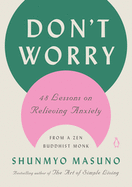
| Publisher: | Penguin Life | |
| Genre: | Self-Help, General (see also Philosophy - Buddhist), Mindfulness & Meditation, Zen, Buddhism, Body, Mind & Spirit, Anxieties & Phobias, Religion, Philosophy | |
| ISBN: | 9780143136705 | |
| Pub Date: | April 2022 | |
| Price: | $22 |
| Body, Mind & Spirit |
by Shunmyo Masuno, trans. by Allison Markin Powell
Anxiety can be overwhelming, but what if there were small ways to learn to refocus anxiety triggers so that everyday life could become more manageable and enjoyable? Shunmyo Masuno (The Art of Simple Living), the head priest of a Buddhist temple in Japan, leads readers through a Zen approach to life in Don't Worry: 48 Lessons on Relieving Anxiety from a Zen Buddhist Monk. In lessons imparted through phrases derived from scriptures (zengo) and anecdotes that "help us understand the wisdom and practice of Zen," Masuno seeks to teach readers to "focus on the here and now," instead of "agonizing over what might happen in the future" so that they can "enjoy a calmer, more relaxed, and positive version" of themselves.
The book of teachings, translated from the Japanese by Allison Markin Powell, organizes its 48 lessons into five parts of varying lengths; each lesson comprises a short, meditative chapter. Readers can move through it cover to cover or dip in and out. All Zen sayings discussed in the book are indexed at the end, which provides another way to use the text: readers can find a zengo that resonates with one's current moment and then read Masuno's meditation on that lesson. It adds up to an approachable yet flexible guide to making Zen practice a habit. Rather than prescribing one way to let go of anxieties, Masuno creates a format in Don't Worry that lets readers take what they need and form their own Zen awareness. --Michelle Anya Anjirbag, freelance reviewer
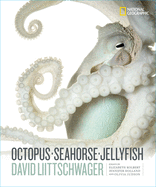
| Publisher: | National Geographic | |
| Genre: | Photography, Life Sciences, Marine Biology, Nature, Animals, Science, Subjects & Themes, Marine Life, Plants & Animals | |
| ISBN: | 9781426221798 | |
| Pub Date: | April 2022 | |
| Price: | $35 |
| Starred | Nature & Environment |
by David Liittschwager
To visit an aquarium is to know the unsurpassed peace and wonder that comes from a proximity to the underwater world. Photographer David Liittschwager (Archipelago, with Susan Middleton) agrees, and his Octopus, Seahorse, Jellyfish offers a stunning glimpse into this world, a view into those mysterious depths now made accessible from homes or libraries. With a foreword and essay by Pulitzer Prize-winning science writer Elizabeth Kolbert, who admires the "stunning, sinuous beauty" that Liittschwager captures with his camera, and additional essays from Olivia Judson and Jennifer Holland, the collection makes wise use of the engaging and informational texts. However, it is the artistry of Liittschwager that will draw readers in, while inspiring awe on every page.
In this brilliantly designed book of photography, truly beautiful to behold, every detail has been considered--the fonts, the judicious use of white space, and the selection and layout of the dozens of vivid photographs. But it is more than just a visual stunner: it also highlights humanity's role in the destruction and preservation of these and countless other species, while simultaneously contextualizing humans within the broader sweep of nature. "When I remember that an octopus has a more efficient eye design than we humans have," Liittschwager explains in the introduction, "I am persuaded that humans are maybe not the pinnacle of evolution, but an untidy work in progress." All art is perspective, and this book invites readers to shift their perspectives toward those creatures not usually seen but still worthy of admiration and protection. --Sara Beth West, freelance reviewer and librarian
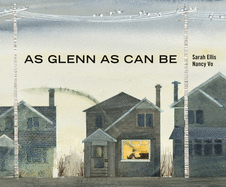
| Publisher: | Groundwood Books | |
| Genre: | Canada, Emotions & Feelings, Music, General, Social Themes, Biographical, Juvenile Fiction, Performing Arts, Historical | |
| ISBN: | 9781773064680 | |
| Pub Date: | April 2022 | |
| Price: | $19.99 |
| Starred | Children's & Young Adult |
by Sarah Ellis, illust. by Nancy Vo
"Glenn loves to play the piano. He loves it more than anything." In As Glenn as Can Be, Sarah Ellis (Dodger Boy) succinctly and whimsically relates the unusual nature of this artist. Nancy Vo (The Outlaw) complements Ellis's prose with winsome illustrations that bring form to the quirky and talented prodigy. Together they introduce young readers to the Canadian classical pianist Glenn Gould (1932-1982) and his music.
Ellis uses Gould's likes and dislikes to sketch his portrait: Glenn "likes nature.... he does not like being cold"; he "likes the company of animals.... he finds people more difficult.... He does not like parties." Ellis explains in her author's note that while she took liberties with the timeline, the picture book is entirely factual. Her choices of details and events to include in this brief biography make the initiation into Gould's world particularly engaging. Meanwhile, Vo's mixed-media art includes thematic emulations of waves of sound or the form of a musical staff. Vo's art has a sense of texture and her exquisite use of shading creates atmosphere. Especially powerful is a spread depicting Gould performing in front of throngs of faceless individuals--the blacks, browns and grays of this layout convey an intensity from both performer and audience.
As Glenn as Can Be is an accessible entry into Gould's life for young readers. And for those who may feel they're different from other children, the unconventional Gould may suggest to them that different isn't so bad. --Jen Forbus, freelancer
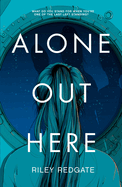
| Publisher: | Disney-Hyperion | |
| Genre: | General, Juvenile Fiction, Science Fiction | |
| ISBN: | 9781368064729 | |
| Pub Date: | April 2022 | |
| Price: | $18.99 |
| Children's & Young Adult |
by Riley Redgate
Alone Out Here by Riley Redgate (Noteworthy) is an emotional and fast-paced YA space thriller that examines the cost of humanity surviving an apocalypse.
When the volcanic eruptions that were forecast to destroy Earth occur months early, First Daughter of the U.S. Leigh Chen is one of 53 teens (all children of Global Fleet Planning Commission members) who manage to board a prototype spaceship. The Lazarus, however, has only enough food for four months. Eli, daughter of the Lazarus's intended pilot, jumps into action unflinchingly, choosing leaders and steering the ship toward a failed terraforming colony in search of plant seeds. But getting there will mean strict rationing. And "hungry people start trouble." Debates soon arise over why Eli and her trusted few, Leigh included, are in charge. As resentment leads to fighting, Leigh can't help seeing how the overtaxed and starving crew is already mirroring the hostile culture that doomed Earth.
Leigh's first-person narration beautifully encapsulates the struggle of executive decision-making without compromising one's integrity. "You've never said anything for yourself your whole life," one crew member accuses Leigh, who purposefully acts like "a suit of armor" with her "visor slammed shut." The multinational group also allows Redgate to include issues of corrupt politics, class inequality and military rule. The teens' desperation to both survive and do better than their parents generates an intensely heated atmosphere of dangerous secrets, jaw-dropping betrayals, steadily increasing violence, breakneck action sequences and probing conversations about what they stand for. A thoughtful and breathlessly paced science fiction survival story. --Samantha Zaboski, freelance editor and reviewer